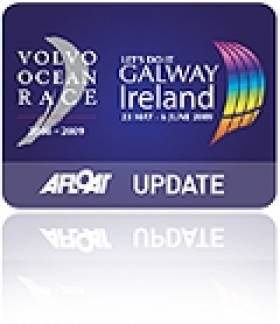Displaying items by tag: Galway Chamber
Aran Island Ferries Celebrate 40th Year With Galway Chamber Cruise
Western seaboard operator, Aran Island Ferries with a five-strong fleet, hosted a Galway Chamber ‘Connect Series’ event last week.
The event took place during a cruise on Galway Bay which gave members of the Chamber to network while also enjoying a pleasurable excursion.
This season Aran Island Ferries celebrated its 40 year and the people who have contributed to its success with operating the Rossaveal-Aran Island’s routes, Ireland’s longest and largest year-round ferry firm owned by O’Brien family of An Cheathrú Rua, Connemara.
In 2020 they opened a Galway-Inis Mór route (last served by Naomh Eanna until 1988) served by Ireland’s biggest domestic ferry Saoirse na Farraige for 392 passengers. The 20 knot ferry takes a passage time of 90 minutes.
The O’Brien’s first sailed with passengers using a traditional Galway Hooker, An Tonaí in the 1970’s which was followed with the purchase of a passenger ferry, the Dún Aengus, with 48-seats in 1983.
Currently, Aran Island Ferries five ferries have a total passenger capacity of 1,400 operating the two routes across Galway Bay.
Galway Advertiser has more on the celebratory Chamber cruise.
Asides the Saoirse na Farraige, custom built by Cheoy Lee Shipyards, Hong Kong, the rest of the fleet comprise of Banrion na Farraige, Ceol na Farraige, Draoicht na Farraige and Glor na Farraige which in 2015 was chartered for tender duties off Dun Laoghaire for to cruise ship Royal Princess.
Minister's Decision on Port Welcomed by Galway Chamber
#Postponed- Minister for Transport and Tourism Paschal Donohoe TD, following cross party lobbying, on Wednesday announced he was to postpone signing the transfer of Port of Galway to Galway City Council for at least 18 months, which has been welcomed by Galway Chamber.
Speaking after the announcement President of Galway Chamber Frank Greene said that this will give time for the completion of the planning process as previously reported on Afloat.ie
The Galway Independent has more on the port postponement.
Galway Businesses Urged to Leave Volvo Ocean Race Legacy
#VOLVO OCEAN RACE - Businesses in Galway "must not abuse their affiliation" with the Volvo Ocean Race when taking advantage of its visit to the city this summer, a meeting hosted by the organisers heard on Monday.
As the Galway Independent reports, Galway Chamber president Declan Dooley urged business community to ask what it can do to help the event, rather than expecting the event to do something for its business.
He added that it was “critically important” that businesses ensured the expected 600,000 visitors to Galway were treated with "friendly service" and not "ripped off".
Also at the meeting at the Meryck Hotel, Let’s Do It Global MD Micheline McNamara outlined plans for the the Global Village and Race Villages and explained how businesses could get involved.
She said: “We want to develop a business legacy, so that when the boats leave, there are trade relationships, and business relationships that stay on."
As previously reported on Afloat.ie, organisers of the Volvo Ocean Race stopover this July have promised the event will be "bigger and better" than the previous visit in 2009.
The Galway Independent has more on the story HERE.




























































